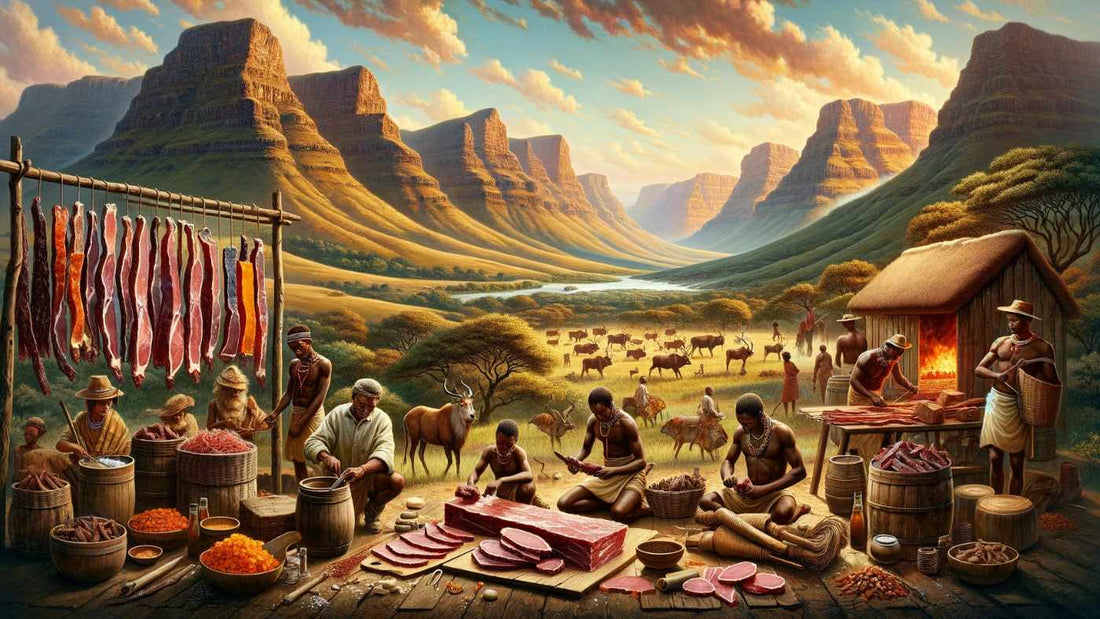Biltong, a beloved South African delicacy, has a rich history deeply rooted in the region's cultural and culinary traditions.
It dates back to the earliest days of South Africa's indigenous peoples and underwent further development in the 17th century under the influence of Dutch settlers.
The indigenous tribes of Southern Africa, such as the Khoikhoi, were the first to use a meat preservation method similar to what we now know as biltong.
They sliced meat (often venison), seasoned it with salt, and dried it in the sun or wind to preserve it when food was scarce.
This method was vital for survival, especially during long journeys or harsh weather conditions.
The influence of Dutch settlers
When the Dutch settlers, the Voortrekkers, arrived in South Africa in the early 1600s, they adapted this meat-preserving method.
They brought their culinary traditions, which included drying meat in the European style.
The Dutch used vinegar in the curing process, along with salts and various spices, which added flavor and aided in the preservation process.
This combination of European curing methods with indigenous drying techniques led to the creation of what we now recognize as biltong.
The importance of the great trek
Biltong became an essential part of the diet for the Voortrekkers during the Great Trek in the 1830s, a mass migration of Dutch-speaking settlers to escape British rule.
The need for durable, protein-rich food that could withstand long journeys without refrigeration made biltong an ideal choice.
The evolution of biltong over time
Over time, the recipe for biltong evolved, incorporating different spices and meats, such as beef, game, and ostrich.
Each region in South Africa has developed its own unique twist on biltong, with variations in spice blends and preparation methods.
Today, biltong is a staple in South African cuisine and has gained popularity worldwide.
It's appreciated for its rich, savory flavor and as a healthy, protein-packed snack.
The traditional methods of preparing biltong have remained the same, honoring this unique South African food's rich history and cultural significance.
Looking back to move forward
Biltong's rich history reveals a food once pivotal for survival, now pivotal for flavor.
Today, respect for timeless methods and ingredients for snacks that sustain any journey guides our hands.
That same carefully crafted cuisine can sustain your days more healthily.
🥩 Our Original Bison and Beef Biltong honors history through taste and nutrition. Check it out!
FAQs
How long does biltong last?
Properly stored in a cool, dry place, biltong can last up to 3 months. Keep it sealed in a plastic bag or container to prevent it from drying out.
How do you eat biltong?
Biltong can be enjoyed on its own, just like beef jerky. Its firm, sliced texture also makes it easy to incorporate into meals. Try it chopped up in salads, eggs, pasta dishes, or sandwiches.
Is biltong made from raw meat?
No. Biltong meat undergoes a thorough curing, spicing, and drying process that preserves and locks in flavor.
No further cooking is required before eating it.
What is the difference between biltong and beef jerky?
While both are dried and cured, biltong uses whole muscle meat instead of ground or thinly sliced.
It’s also air-dried instead of cooked and smoked like jerky.

